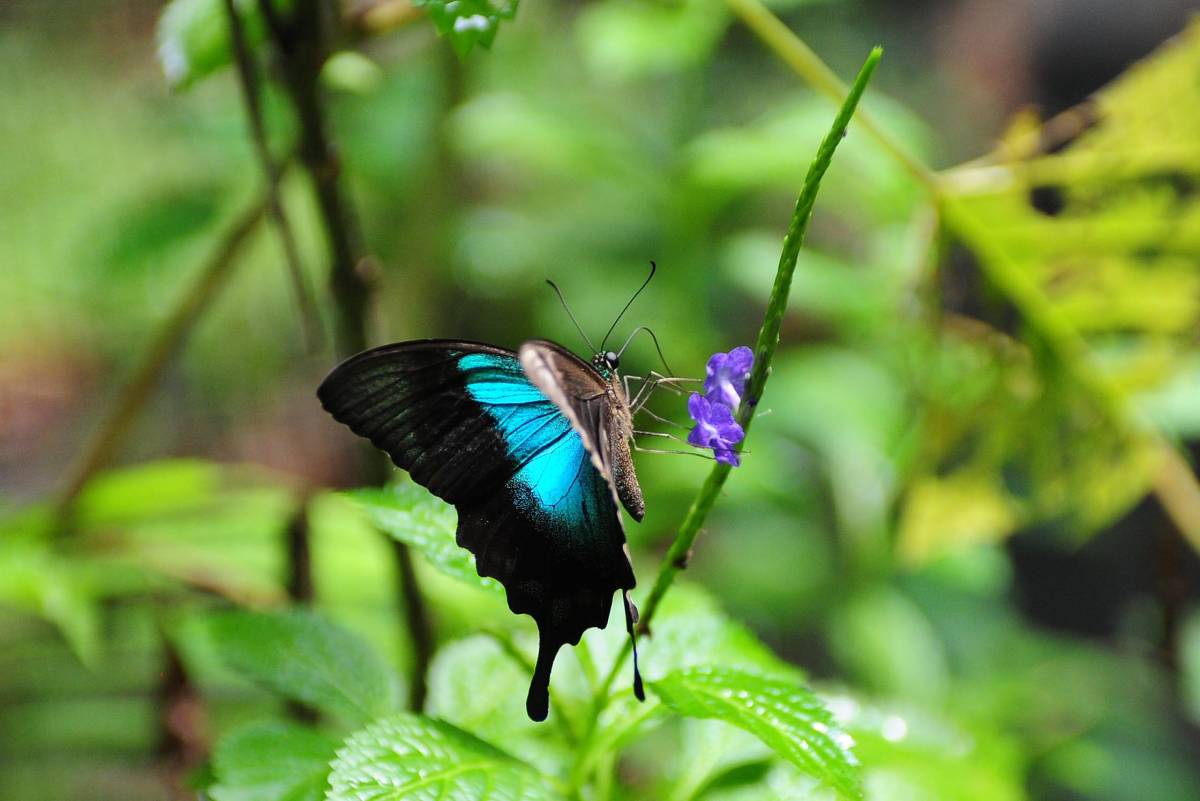The East Coast, where the Visakhapatnam district is located, is made up of several dense and forested areas that are home to several varieties of flora and fauna…reports Narendra Puppala
Butterflies – in contrast to their dainty name and fragile appearance – are a hardy species. And their presence tells us a lot about the surrounding eco-system, feels Dr Mantha Ramamurthy. He should know, because he has been on their trail since 2005 in Visakhapatnam district of Andhra Pradesh.
Credited with setting up Andhra Pradesh’s only biodiversity park of its kind — a mini-jungle, boasting of diverse plant and butterfly species — in the midst of Visakhapatnam’s concrete urbanscape, Ramamurthy and his band of ecological warriors – students and volunteers – are active in creating awareness and studying the environment – read butterflies.
The latest study by Ramamurthy and a team of researchers has identified 12 butterfly species that are non-native or new to the coastal district which lies in the northern part of the Eastern Ghats. The study conducted between 2016 and 2018 by members of the Dolphin Nature Conservation Society, is titled ‘Butterflies of Visakhapatnam District’ and has been published in the scientific journal Zoo’s Print. Mantha Ramamurthy directed the research conducted by STPL Ushasri and Pavani Sagiraju.

The butterfly species that were newly discovered in Visakhapatnam district include Colotis amata, Delias hyparete, Eurema brigitta, E. laeta, Freyeria trochylus, Ixias pyrene, Lethe europa, Troides helena,Vanessa cardui, Virachola isocrates, Ypthima baldus and Y. ceylonica.
In the real world, these butterflies go by common names such as the common birdwing, small salmon Arab, painted jezebel, small grass yellow, spotless grass yellow, yellow orange-tip, bamboo tree brown, painted lady, common five-ring, white four-ring, orange-spotted grass jewel and common guava blue.
As per the study, a total of 105 butterfly species, belonging to six families, were recorded in the district. Nearly seven species, of the 12 species that were recorded as new to Visakhapatnam district, enjoy protection under the Wildlife (Protection) Act, 1972.
The East Coast, where the Visakhapatnam district is located, is made up of several dense and forested areas that are home to several varieties of flora and fauna.
The study was conducted in 11 areas of the district, included six areas located in the forests of the Eastern Ghats, and five areas in urban environments.
Interestingly, while many of the new butterfly species were discovered in wooded terrain like Araku, Ananthagiri, Chintapalli, Paderu and Sileru, a good number of these butterfly species were also found to have made themselves at home in the city’s urban landscape.

However, Ramamurthy cautions that it would be premature to conclude that the butterflies identified are non-native or new to the district. He feels that the Eastern Ghats ecology has never really been researched thoroughly thus far. Since research initiatives in the area are largely done in isolation and there has never been a coordinated push for research in this part of the Eastern Ghats, he feels it is possible that some of these butterfly species may have actually been original inhabitants of the area.
“Whether some of these species migrated from the Western Ghats or are variants of original inhabitants, needs to be studied. Concerted research efforts are required for the flora and fauna of the Eastern Ghats as well. It is still waiting to be discovered fully” Ramamurthy stresses.
In comparison to their more famous counterpart along the western coast of India,the Eastern Ghats are quite low-profile. Accorded the status of a world biodiversity zone, the Western Ghats are home to a vast variety of flora and fauna that have been extensively studied and elaborately documented. The same however cannot be said of the Eastern Ghats which are relatively less explored. Its geographic features are not so expansive as the Western Ghats, and have also suffered more degradation due to mineral exploitation.

“Forests are facing the axe, and bauxite mining has destroyed much of the forest wealth and species. Tribals should be taught ecologically safe livelihoods, so that they can safeguard the forests. Along with that more volunteers should come forward” Ramamurthy says over the telephone from California, USA, where he’s visiting his son.
A previous study in 2013, had listed 23 butterfly species as non-native to the district. Ramamurthy feels that the Eastern Ghats have a lot more to divulge.
ALSO READ-Etihad’s sustainable flight reduces emissions by 72%
